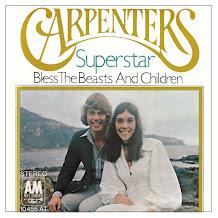Just re-do it
What’s your favorite song by The Carpenters? That would seem to be a simple enough question – but when it comes to the ‘70s sister-and-brother duo, it can be a little more complicated. Because often, you don’t just have to choose a song, you have a choose a version.
Richard Carpenter didn’t just sing harmony to his Karen’s lead vocals. As producer, arranger, lyricist, and composer, he was deeply involved in the production of the tracks – and a bit of a perfectionist. So over the years, as their hits have been re-released, he’s used the opportunity to remix many tracks to improve sound quality and add new instrumentation and flourishes – on songs like Ticket to Ride, Top of the World, and Superstar.
And it hasn't been just Richard Carpenter re-doing works long after they’ve been completed. Think of Neil Sedaka, re-recording his 1962 bubblegum hit, Breaking Up is Hard To Do as a soulful piano ballad in 1975. Or the group Chicago, re-arranging their 25 or 6 to 4 into drum-pounding stadium rock.
In the theatre, Neil Simon was legendary for rewriting his plays during tryouts. By the time a performance ended, he’d be ready to dig back into the script to sharpen jokes and even reconceptualize whole scenes.

Over in the cineplex, we’ve had Steven Spielberg and his release of Close Encounters of the Third Kind: The Special Edition, a re-release of his 1977 sci-fi epic, now with tighter editing and a more drawn-out ending.
And of course, George Lucas gave us The Special Editions of the original Star Wars trilogy, with improved special effects (and the infamous “Han didn’t shoot first” re-edit). Francis Ford Coppola really embraced the trend by re-cutting his poorly received Godfather III to become The Godfather Coda: The Death of Michael Corleone; plus his aptly re-named Apocalypse Now Redux and Cotton Club Encore.
Oh, and let’s not forget (though many would like to), The 4-hour Zack Snyder cut of the Justice League.
But re-cutting movies is still relatively rare. In TV, however, it’s not uncommon to redo unsuccessful pilots, like the re-tooled Barney Miller, which got a series order only after co-creator Danny Arnold rewrote and recast several parts and refocused the action solely to the detective’s squad room. Or Grapevine, a gossipy sitcom from David Frankel that CBS cancelled after 6 episodes in 1992, then revived with a new cast eight years later (and was cancelled again, this time after 5 episodes).

All this revisionism may drive purists to distraction – but I can relate. No, I don’t write songs or plays, make movies or TV shows for a living – but as a creator of ads and commercials, I have a similar creative impulse toward dissatisfaction and perfectionism.
Once I start working on an advertising problem, I find it hard to turn my brain off. Even after the deadline’s come and gone, even after I’ve had to make a decision and move on to other assignments, my back-brain is often still working on a better solution. Which is how I’ve earned a reputation for re-thinking ad concepts and re-writing headlines, even after they’ve already appeared in print or on TV. That’s the great thing about digital online advertising and web pages – you can go back into them and change something even while its running. (And you know I have.)
Would it surprise you to know that for fourteen years, this blog was known as Deconstruction on Madison Avenue – until I switched it to the name you see now at the top of the page (which incidentally, was the original blog name for its first couple weeks)?
Appropriately, when I assembled a collection of advertising-related essays for a book I published earlier this year, I couldn’t resist going beyond just fixing typos. I expanded on some points I was making. I added an anecdote here and there. Some pieces I began years ago and never got around to finishing until now. At least one essay I rewrote entirely.




Comments